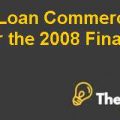
Introduction
Hajjar, a 38 year old young man planned to become an entrepreneur despite of having an unconventional background related to business practices. He recognizes the opportunity in the Lebanon beer segment and planned to open a beer brewing facility. In the year 2006, industry dynamics were quite favorable and the entire world beer market possesses the total gigantic revenue of around $294.5 billion. The global consumption was around 123.8 billion liters which further boosted the morale of the Hajjar. Henrik joined Hajjar as the second partner and owns the 50% investment in the company.
Relevant stakeholders
Hajjar and Henrik were the two major stakeholders of the 961 Beer.
Issues and Analysis
There were numerous issues which needed to tackle by both the partners mutually. 961 Beer had to deal with the extraordinary unfavorable political and law & order situation. Moreover, it needs to deal with the top industry rivals and expansion issues related to the production capacity. Side by side 961 Beer had to keep their marketing and branding activities on the toes because of the intense competition in the beer industry. Additionally the introduction of the pub was an exceptional initiative by the 961 Beer which brought a lot of people in as the customers.
Financial Analysis
The company’s revenues were increasing in a gigantic manner which reflects a solid initial performance. In the year 2008 company sold around 6,000 cases which simply multiplied and get doubled in the year 2009. One of the extraordinary boom that has been witnessed by the company was in the year 2011 which makes the sales to a comparatively massive figure of 60,000 cases. Company volume of beer selling was a massive success and within just six years of time it reached 200,000 cases (as of 2012). The element which needs to be given special focus here is the raw material and supply cost per case. The cost per case in 2006 was around $13.6 and the revenue per case was $10.6. The issue of exceeding cost needs to be controlled because selling in huge quantities will eventually result in gigantic profits if the cost structure didn’t managed in an optimistic manner.
Porter Five Forces Model
The porter five forces model examines the market conditions with respect to the ease of doing business. It examines the extent to which different market forces are capable of driving demand and controlling profit terms for the companies in the market. It also determines the extent to which external forces may affect the performance of companies in the respective market.
Threat of new entrants is high
The overall threat of new possible participants in the beer industry of Lebanon and even on a worldwide basis is quiet high. Although in order to enter this market, a company needs significant initial capital for investment in technology and certain necessary facilities like processing, warehousing, transportation and meeting quality standards, but due to the exceptionally high demand and handsome profits there is a lot attraction present in the Beer market. New entrants will face difficulties in installing plants since they need a huge amount of capital.
The bargaining power of buyers is medium
The economy and the financial system of the country is quite problematic and creating issues for both the entrepreneurs and customers. The lifestyle of the people of Lebanon also faces issues because of war and other unwanted economic fluctuations. This means that they are becoming economically un-stable due to several external elements. Lebanon has a $40 million beer market which is controlled by 70% of the local beer manufacturers. However, the population of Lebanon is well 4 million, which means that there are different market segments with different preferences. The local industry is dominated by Almaza Company. Most of the Lebanese look for better prices before making a purchase. Due to greater competition from the local companies, which provided beers at lower prices and with a great deal of variety, the bargaining power of buyers is medium.
Bargaining power of suppliers is medium
The bargaining power of suppliers is medium. The reason for the medium buying power is that these suppliers and companies both actually go for strategic alliances. Since the supplier is an important aspect to attain overall success, so a company always tries its level best not to lose that supplier so that the quality standards can be consistent. Similarly, a beer ingredients supplier will always try its level best that its strategic alliance with a 961 Beer company should be aligned and run smoothly without any hurdle because when a supplier loses a contract so he will for sure face some serious losses in market reputation. The supplier will be responsible to supply elements like barley, hops and yeast..................
This is just a sample partial case solution. Please place the order on the website to order your own originally done case solution.












